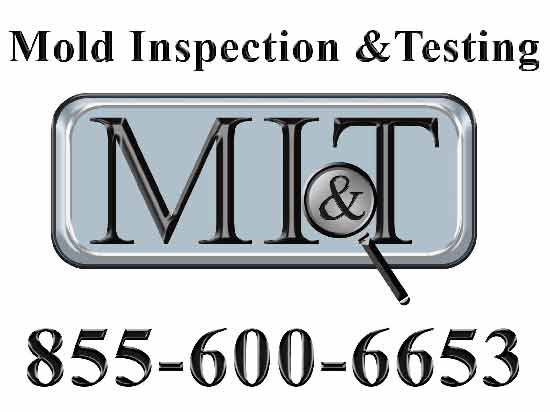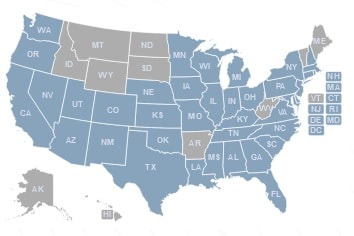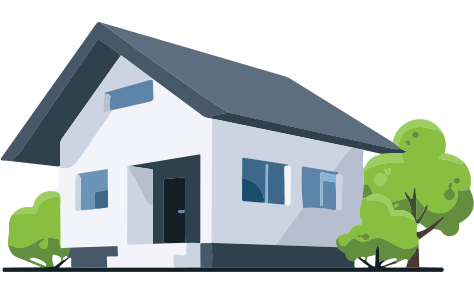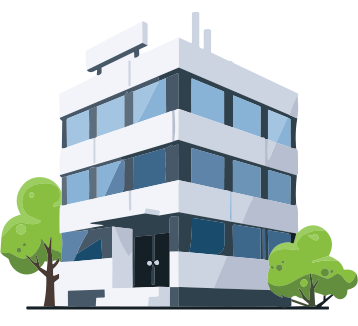






Intro to Mold Inspection and Mold Testing: A Complete Guide
Welcome to the home of MI&T Mold Inspection & Testing, the nation’s trusted resource for unbiased information and assessments for indoor mold growth. Whether you're a homeowner, tenant, property manager, or commercial property owner; we all spend a great deal of time indoors and it is important to have some knowledge on these topics. If you have landed on this page, you likely have questions on mold, mold inspections and mold testing. We have compiled this comprehensive guide to these topics and frequently asked questions and hope you find it helpful. If you find yourself wanting to know more about a specific topic, follow the links in each section to learn even more.

MI&T Mold Inspection Process

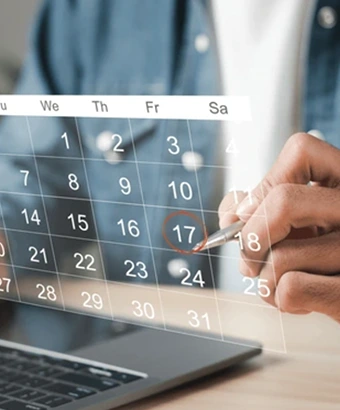
Schedule
Appointment
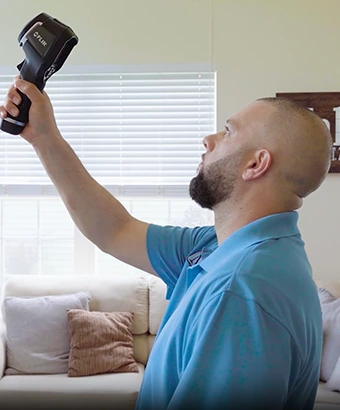
Inspection
Performed

Samples
Collected

Sent To
Independent Lab
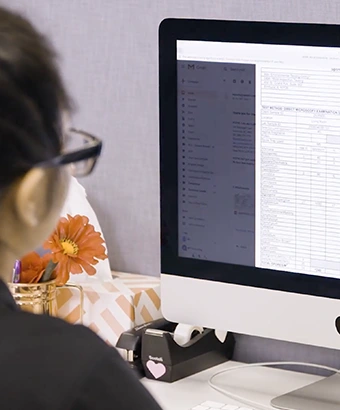
Report With
Findings
What is included in a Mold Inspection?
A mold inspection is like a home/building inspection but different at the same time. Home and Building Inspectors are “Generalists”. They are there to make notes on various defects found when walking a property. A Mold Inspector on the other hand is a “Specialist”. When hiring someone specifically for a mold inspection, there should be very specific goals:
- Determine if an indoor Mold Growth problem is present or not. The mold inspection should include the items listed below to reach this determination.
- If a Problem Exists, clarify the extent of the problem.
- When mold remediation is necessary, provide a “Mold Protocol” that sets the scope of work to be performed by a mold remediation contractor.
- Consultant for the Client and Contractor throughout the Remediation process.
- Perform Post Remediation Clearance Inspection to project has been completed successfully; there is no visible mold and air samples are within acceptable ranges.
To reach those goals and make final determinations, the Mold Inspection Process typically includes the following:
- Visual Assessment and Documentation: Check all readily accessible areas for signs of water, mold, and moisture. Photos are taken for the Client and potential contractor to see what the inspector has noted.
- Thermal Imaging Camera: These cameras cannot “see mold” as people often think. They are used to detect temperature change. Thermals are extremely useful for scanning large areas in a short amount of time to later be evaluated by a moisture meter as well as looking for leaks in hard-to-reach areas like ceilings.
- Moisture Readings: While a thermal looks fancy and it is, a moisture meter that can physically touch material will be the ultimate determination on whether something is wet. The accuracy of these meters is very important to the Restoration Contractor as they need to make sure a structure is not only free from mold but also dry.
- Mold Testing: Air and Surfaces tests that are collected and sent to an independent lab for analysis. The
- Mold Inspection Report and Protocol: After the inspection is completed and the mold test lab results are in, the inspector will provide final report. This report will be:
- Clearance Letter: A clearance letter is exactly as it sounds. A document that states the property has been inspected and it is the professional opinion of the inspector that mold remediation is not necessary at the property.
- Mold Removal Protocol: For inspections on a property that does require mold remediation, a protocol sets the “scope of work” for a remediation contractor. This can be provided to Restoration companies for ballpark quotes and is used by both the Client and the Contractor as a guide for what needs to be done on the project.
- Air Sampling: Collecting air samples to analyze mold spore levels and types present in the indoor environment.
- Surface Sampling: Swab or tape lifts that are taken from materials that have a mold like appearance. These direct samples will say what species of mold is present which helps to confirm a source of air quality issues and confirm problems that have yet to go airborne.
Is Mold Testing Necessary?
Mold Testing is an extremely valuable part of the mold inspection process. You may have come across one of the various articles written by government agencies and biased Restoration Companies saying that it is not needed when visible mold is present. We do agree that if you know mold remediation is necessary, what areas need work and have identified the source; it is OK to go directly into the mold remediation process. However, there is a common theme with these anti-testing articles and that is that they are very short sighted and fail to recognize when and how mold testing is useful:
- Independent Mold Inspection: Mold Testing is only as valuable as the person conducting it. If you use an inspector that takes your tests and gives lab results without any advice on the mold remediation process, it is not worth the money. Contractors have an incentive to say a problem exists and/or exaggerate about the extent of it. Using an inspector that is independent from that process ensures that you can trust the findings.
- Service Fees and Remediation Quotes: Nearly all reputable Restoration companies will charge for a service call to come look at your problem. This is especially true with current inflation and rising costs for gas. If you were to pay for 2-3 service calls it is right around the same price as a mold inspection from MI&T. These visits will not include testing and a report. Once you get the report you can simply forward it via email to multiple companies to get ballpark quotes and setup a visit with the company you are most interested in to lock in pricing and sign a contract.
- Documentation/Dispute Resolution: If you in a dispute about a mold problem, having mold testing is crucial to supporting your argument. On one hand you may have common tenant / landlord disputes or a person who paid for mold remediation that they don’t feel was handled properly. On the other you could be the landlord or property manager documenting what issues, disproving tenant/employee claims or a remediation company verifying a successful project. While government agencies with no experience in this field seem to be quick to dismiss its value, the courts and other restoration professionals understand the purpose that they serve.
- Mold Sensitive: For mold issues stemming from excess humidity and moisture rather than water intrusion, levels of mold in the air can be “elevated” without having visible mold. There are people who are sensitive and/or allergic to mold who can suffer when being in an environment like this. The only way to determine if an indoor environment has high levels of mold without visible growth is with mold testing.
- Clearance Testing: As previously stated, we do not disagree with going directly into the mold remediation process under certain circumstances. However, we always recommend that mold testing be performed to confirm a mold remediation project has been completed. This is for both the Client and the Contractor.
- Real Estate Transactions: Buying a piece of real estate is always a big investment. Unfortunately, mold can be clean wiped away or painted over if someone is trying to cover up a problem. Mold testing will reveal these problems even when they are not visible to the naked eye.
Mold testing offers information for property owners and managers to make informed decisions. When it is performed by an unbiased mold inspector with years of experience, the service is very valuable. For tenants, paid mold testing is often the only option and is absolutely necessary.

When Should You Hire a Mold Inspector?
Knowing when to hire a mold inspector is crucial for preventing extensive mold damage and protecting indoor air quality. If you find yourself in one or more of the following situations, hiring a mold inspector would be beneficial to assess your property.
- Recent Water Damage
- Visible Growth or Strange Odor
- Real Estate Transaction
- Dispute or Potential Litigation
- Health Complications
- Older Home
- Peace of Mind
To learn more about these various topics please see our in depth article on 10 Reasons to Get a Mold Inspection.
Early detection through regular inspections can mitigate health risks associated with mold exposure and reduce remediation costs.
How Much Does a Mold Inspection Cost?
Hiring a professional to perform a mold inspection can typically cost between $300-1000 with an average of around $600. The higher side of that range is usually only seen for larger properties and extensive testing.
A Mold Inspector will typically base their pricing off the following:
- Type of Property: Residential or Commercial
- Size of the Property
- Number of Units to be Inspected
- Location and Accessibility
- Number of Mold Tests Performed
- Litigation Assistance
MI&T believes in transparent pricing and a breakdown can be seen by Clicking Here. While many other inspectors charge on the higher end of that range no matter what, we take pride in delivering a great product at a relatively affordable price. We have staff available 12 hours of the day so you will always get ahold of someone and quality control team if there are issues with your inspection.
How Much Does Mold Testing Cost?
Mold Testing costs vary per inspection company. MI&T includes an inside vs outside air test with its inspection cost and charges $75-100 per additional test, which varies by the location and inspector.
The mold inspector will present a testing plan and the Client approves or declines suggested tests. Mold tests are sent into an independent lab for analysis. Extra costs are to cover the sample medium and lab fees.
What are the Different Types of Mold Testing
Spore Trap Air Samples: A low volume air pump pulls air into a “spore trap” which is a cassette that contains a slide with adhesive. Both viable and non-viable spores stick to the slide, which is sent to a lab for analysis. The slide is read under a microscope where the species of mold and quantities are identified.
Cavity Air Samples: These tests are also taken with a spore trap. The difference is that an entry point is used to access something like inside a wall or behind a cabinet. An extension is placed on top of the spore trap to allow this. Often times a pea sized hole punch is required to take these samples. It is only recommended if an area is showing signs of damage.
Swab or Tape Lift: Potential visible growth can be tested by these surface tests. Either a cotton swab or a tape lift is used to transfer the growth to the medium and sent into a lab for analysis. Lab results typically show a Light, Moderate, Heavy or No Fungal Growth as a count and not a specific quantity like air tests.
ERMI samples (Environmental Relative Moldiness Index), also called the EPA-36, is a dust collection sample that checks for the presence of settled spores within the building. DNA analysis of the sample allows for detection to the species level (ex. Aspergillus Versicolor) rather than the genus level (ex. Aspergillus) like microscopic analysis of swab and air samples. Samples can be collected either by use of a vacuum cassette, or an electrostatic cloth. It can provide useful information for health compromised individuals, as Group 1 of the ERMI test are species that are commonly associated with water damage and some that have known mycotoxin association.
ARMI American Relative Moldiness Index (ARMI) – Essentially the same thing as ERMI testing but it is limits the testing to 13 species rather than 36.
EMMA testing is a swab sample collected from the HVAC filter. It limits testing to 12 species of mold known to be associated with water damage and mycotoxins, but also does direct detection for the presence of mycotoxins from the major groups. These samples are also useful for determining home health for health compromised individuals.
Gravity Plate – When performed by a professional with a vacuum pump and sent to a lab, these tests can offer valuable information. Living mold spores gather on the plate and a lab cultivates them to see what is present and quantifies. Unfortunately, this is inefficient as it takes time and can be expensive without much benefit over Spore Trap testing. Gravity plates are also used on many DIY mold test kits which we will talk about more in the next section.

DIY Mold Test Kits, are they worth it?
There are different types of mold test kits out there. Surfaces Tests, Petri Dishes and even some air sampling pumps. These range from somewhat cheap to almost as much as a professional mold inspection. Now there is nothing particularly wrong with these kits themselves, for the most part they do what they say. One thing that we ask people to consider is after these test kits tell you that you have mold, what is the next step? Considering your average person is not familiar with indoor mold growth or how to interpret the findings, the answer is usually that they will call a mold professional.
As we mentioned earlier, mold testing is merely a part of what Mold Inspection & Testing is about. By hiring a professional mold inspector right away rather than getting a mold test kit, you can be sure you will get the answers you are looking for rather than having spent money and still being at square one. Look at reviews on these kits and you will see a common theme of no support and not knowing what to do next.
Here at MI&T we have seen this them so much that we decided to launch our own Mold Test Kit to help the people that want to go down this route. The difference is that we let our customers use the cost of the kit towards a professional inspection if they need the service after.
Finding a Mold Inspector Near Me
People looking for a mold inspector should be searching for the following:
- Proper credentials: Licensed or Certified depending on the State.
- Unbiased: Does not perform mold remediation.
- Reviews: Look to other people’s experience for feedback on the inspector.
- Location: By searching within your region, it is more likely that you will find someone that services your property and also is familiar with local construction.
- Customer Service: Did they answer the phone right away? If not, it might be best to look elsewhere. Oftentimes a inspector that tries to do it all is hard to reach which can be frustrating.
When looking for a mold inspector near you, consider MI&T Mold Inspection & Testing. Not only do we have qualified inspectors but also a great team behind them to ensure a great experience. Visit our Locations page to search for an inspector near you and give us a call.
Want to Learn More About Mold?
Visit our Mold Information Blog that has in depth articles on various mold and indoor air quality related articles. We have listed a few the articles we recommend based on frequently asked questions.
Toxic Black Mold – Everything you Need to Know.
MI&T has certified mold inspectors in all of the following areas:
- Albuquerque NM
- Alexandria VA
- Atlanta GA
- Austin TX
- Baltimore MD
- Birmingham AL
- Boston MA
- Charlotte NC
- Chicago IL
- Cincinnati OH
- Cleveland OH
- Columbus OH
- Daytona Beach FL
- Denver CO
- Detroit MI
- Fort Myers FL
- Greenville SC
- Hartford CT
- Houston TX
- Indianapolis IN
- Jackson MS
- Jacksonville FL
- Kansas City MO
- Las Vegas NV
- Little Rock AR
- Louisville KY
- Los Angeles CA
- Memphis TN
- Miami FL
- Minneapolis MN
- Nashville TN
- New Jersey
- New Orleans LA
- New York City
- Omaha NE
- Orlando FL
- Palm Beach FL
- Phoenix AZ
- Pittsburgh PA
- Philadelphia PA
- Portland OR
- Providence RI
- Rochester NY
- Sacramento CA
- Salt Lake City UT
- San Antonio TX
- San Diego CA
- San Francisco CA
- San Jose CA
- Seattle WA
- Shreveport LA
- St. Louis MO
- Tallahassee FL
- Tampa FL
- Toronto ON
- Virginia Beach VA
- Washington DC

